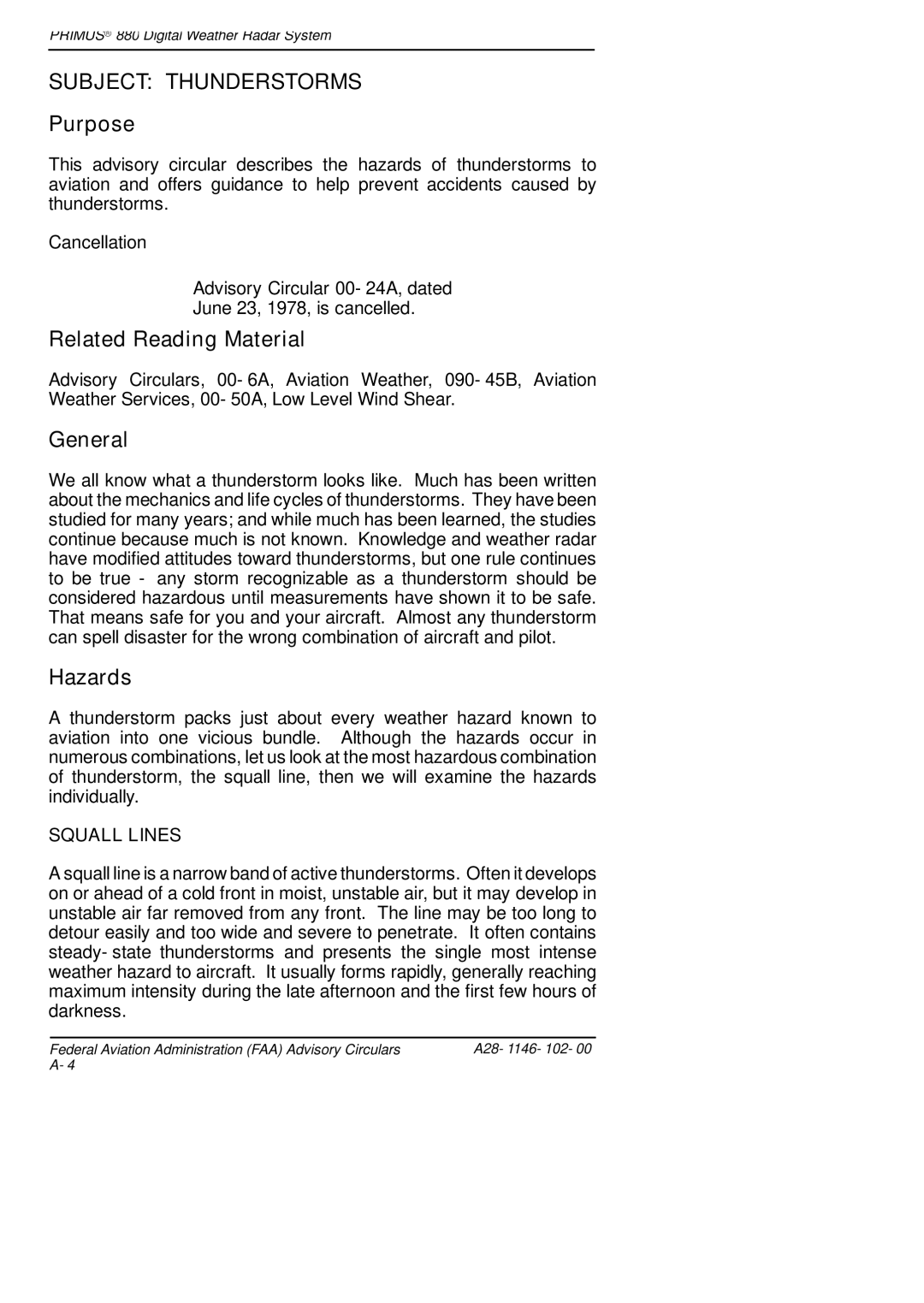
PRIMUSr 880 Digital Weather Radar System
SUBJECT: THUNDERSTORMS
Purpose
This advisory circular describes the hazards of thunderstorms to aviation and offers guidance to help prevent accidents caused by thunderstorms.
Cancellation
Advisory Circular 00- 24A, dated
June 23, 1978, is cancelled.
Related Reading Material
Advisory Circulars, 00- 6A, Aviation Weather, 090- 45B, Aviation Weather Services, 00- 50A, Low Level Wind Shear.
General
We all know what a thunderstorm looks like. Much has been written about the mechanics and life cycles of thunderstorms. They have been studied for many years; and while much has been learned, the studies continue because much is not known. Knowledge and weather radar have modified attitudes toward thunderstorms, but one rule continues to be true - any storm recognizable as a thunderstorm should be considered hazardous until measurements have shown it to be safe. That means safe for you and your aircraft. Almost any thunderstorm can spell disaster for the wrong combination of aircraft and pilot.
Hazards
A thunderstorm packs just about every weather hazard known to aviation into one vicious bundle. Although the hazards occur in numerous combinations, let us look at the most hazardous combination of thunderstorm, the squall line, then we will examine the hazards individually.
SQUALL LINES
A squall line is a narrow band of active thunderstorms. Often it develops on or ahead of a cold front in moist, unstable air, but it may develop in unstable air far removed from any front. The line may be too long to detour easily and too wide and severe to penetrate. It often contains steady- state thunderstorms and presents the single most intense weather hazard to aircraft. It usually forms rapidly, generally reaching maximum intensity during the late afternoon and the first few hours of darkness.
Federal Aviation Administration (FAA) Advisory Circulars | A28- 1146- 102- 00 |
A- 4 |
|
